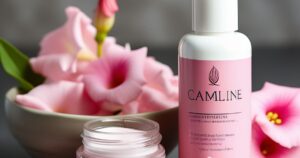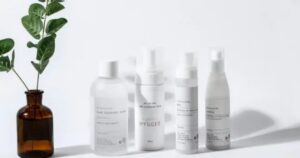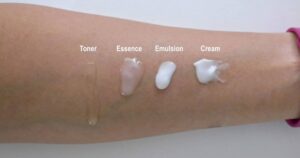Have you ever wondered when is the ideal time to incorporate retinol into your skincare routine? If so, you’re in luck. In this article, we will explore the optimal timing for applying retinol and its incredible benefits for your skin. Whether you’re a skincare enthusiast or just starting your journey, understanding when and how to use retinol will provide you with the knowledge you need to achieve healthy and radiant skin. So, let’s delve into the world of retinol and discover the perfect place for it in your skincare routine.
Key Takeaways
- Consult with a dermatologist for appropriate strength and application frequency
- Cleanse and moisturize skin before applying tretinoin
- Start with every other night application, gradually increase frequency
- Follow dermatologist’s instructions to avoid adverse effects
Understanding the Benefits of Tretinoin
One of the key benefits of tretinoin is its ability to improve skin texture and reduce the appearance of fine lines and wrinkles. For those who desire smooth and youthful-looking skin, tretinoin can be a game-changer. This powerful ingredient works by increasing cell turnover and stimulating collagen production, resulting in a more even and refined complexion. Regular use of tretinoin can also help to diminish the appearance of acne scars and hyperpigmentation, leaving you with a clearer and more radiant complexion. However, it is important to note that tretinoin is a prescription-only medication, and it may not be suitable for everyone. Determining if tretinoin is right for you involves consulting with a dermatologist to assess your skin condition and discuss any potential risks or side effects.
Determining if Tretinoin Is Right for You
Determining the suitability of tretinoin for your skin requires a comprehensive evaluation by a qualified dermatologist. This evaluation will take into account various factors, including your skin type, current skin condition, and any underlying skin issues you may have. Here are three key aspects that the dermatologist will consider:
- Skin type: Your dermatologist will assess whether your skin is oily, dry, or a combination of both. This will help determine how well your skin can tolerate tretinoin and whether it is the right fit for you.
- Skin condition: The dermatologist will evaluate any existing skin concerns, such as acne, wrinkles, or hyperpigmentation. Tretinoin is known to be effective in treating these issues, but its suitability will depend on the severity and nature of your specific skin condition.
- Underlying skin issues: If you have any underlying skin conditions, such as eczema or rosacea, the dermatologist will assess whether tretinoin could potentially aggravate these conditions.
Once you have determined whether tretinoin is suitable for your skin, the next step is to incorporate it into your skincare routine.
Incorporating Tretinoin Into Your Skincare Routine
To successfully incorporate tretinoin into your skincare routine, there are three important steps to follow. Firstly, it is crucial to consult with a dermatologist who can assess your skin type and determine the appropriate strength and frequency of application for tretinoin. This step is essential to ensure that you are using the product correctly and avoiding any potential adverse effects. Secondly, it is important to cleanse and moisturize your skin thoroughly before applying tretinoin. This helps to create a clean canvas for the product and minimizes the risk of irritation. Lastly, start by applying tretinoin every other night, gradually increasing the frequency as your skin tolerates it. This allows your skin to adjust to the product and minimizes the likelihood of irritation or peeling. By following these steps, you can successfully incorporate tretinoin into your skincare routine and achieve the desired results.
Timeline for Seeing Results With Tretinoin
After approximately four to six weeks of consistent use, tretinoin users may start to notice visible improvements in their skin’s texture and appearance. This timeline may vary depending on individual skin type and condition, but with continued use, the results can be significant. Here are three changes that tretinoin users may experience:
- Smoother complexion: Tretinoin works by increasing cell turnover, which can lead to a smoother and more refined skin texture.
- Reduced acne breakouts: Tretinoin is highly effective in treating acne by unclogging pores and reducing inflammation, leading to fewer breakouts over time.
- Improved skin tone and brightness: Tretinoin can help fade dark spots, hyperpigmentation, and even out skin tone, resulting in a brighter and more radiant complexion.
Managing Potential Side Effects of Tretinoin
Minimizing redness and irritation is crucial when managing the potential side effects of tretinoin in a skincare routine. While tretinoin is a highly effective ingredient for treating acne and improving skin texture, it can also cause some discomfort. To minimize redness and irritation, it is important to start with a low concentration of tretinoin and gradually increase it over time. Additionally, using a gentle cleanser and moisturizer can help soothe the skin and reduce irritation. It is also advisable to avoid using other potentially irritating products, such as exfoliants or harsh cleansers, while using tretinoin. Protecting the skin from the sun with sunscreen is also essential, as tretinoin can increase sensitivity to UV radiation. By following these steps, individuals can effectively manage the potential side effects of tretinoin and achieve the desired results in their skincare routine.
Ingredients to Avoid When Using Tretinoin
When using tretinoin in a skincare routine, it is important to avoid certain ingredients that may exacerbate potential side effects. Tretinoin is a powerful retinoid that can cause skin sensitivity and dryness, so it is crucial to be mindful of the products you use alongside it. Here are three ingredients to avoid when using tretinoin:
- Alcohol-based products: These can further dry out the skin and increase irritation.
- Harsh exfoliants: Scrubs or peels that contain rough particles or strong acids can aggravate the skin and cause redness.
- Fragrances and essential oils: These can be irritating and may cause allergic reactions, especially when the skin is already sensitive from tretinoin use.
Tips for Minimizing Tretinoin Irritation
To effectively minimize tretinoin irritation, it is important to follow these helpful tips. First, start by using a pea-sized amount of tretinoin for the entire face. Using more than necessary can increase the risk of irritation. Additionally, it is crucial to apply tretinoin to completely dry skin. Moisturizing beforehand can create a barrier that reduces absorption and potential irritation. It is also recommended to wait at least 20 minutes after washing your face before applying tretinoin. This allows the skin to fully dry and reduces the likelihood of irritation. Furthermore, consider using a gentle cleanser and moisturizer that are specifically formulated for sensitive skin. Avoiding harsh or abrasive products will help minimize inflammation and irritation. Finally, be patient and allow your skin to adjust to tretinoin. Start with a lower concentration and gradually increase it over time to minimize irritation and maximize the benefits of tretinoin.
Frequently Asked Questions
Can I Use Retinol if I Have Sensitive Skin?
Retinol can be used even if you have sensitive skin, but it is essential to proceed with caution. Start by patch testing and gradually introduce it into your skincare routine. Consult with a dermatologist for personalized advice.
Are There Any Specific Products or Ingredients That Should Not Be Used With Retinol?
Certain products or ingredients should not be used with retinol, as they may cause adverse reactions or decrease its effectiveness. It is important to consult with a skincare professional to determine the best combination for your specific needs.
Can I Apply Retinol During the Day or Is It Only Suitable for Nighttime Use?
Retinol is typically recommended for nighttime use due to its potential to cause sensitivity to sunlight. However, it is important to consult with a dermatologist to determine the best application time based on individual skin needs and product instructions.
How Long Should I Wait Before Applying Moisturizer After Using Retinol?
It is recommended to wait for 20-30 minutes before applying moisturizer after using retinol. This allows the retinol to fully absorb into the skin and maximize its effectiveness in addressing skin concerns.
Can Retinol Be Used on Other Parts of the Body Besides the Face?
Retinol can be used on various parts of the body besides the face, such as the neck, chest, and hands. However, it is important to follow specific instructions and guidelines provided by dermatologists for each specific area.
Conclusion
In conclusion, incorporating tretinoin into your skincare routine can provide numerous benefits for your skin. By understanding its benefits, determining if it is right for you, and following a timeline for results, you can effectively manage potential side effects and avoid ingredients that may interact negatively with tretinoin. By following these tips and minimizing irritation, you can achieve healthier, more radiant skin. Remember, Rome wasn’t built in a day, and neither is a perfect skincare routine.










